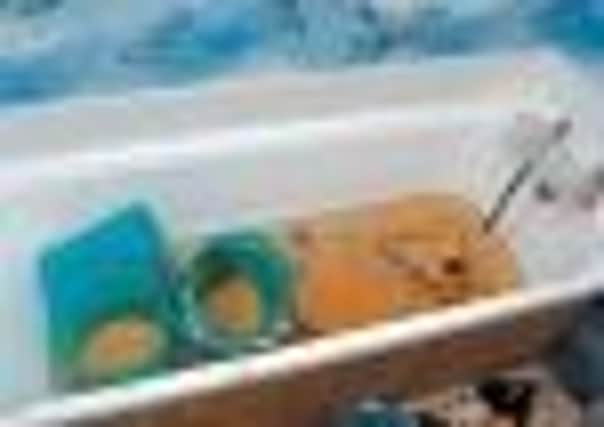Inside the 7/7 bomb killers’ Yorkshire factory


Photographs of the chaotic mess inside 18 Alexandra Grove, Leeds, were released for the first time yesterday at the inquests into the London bombings, which killed 52 innocent people in July 2005.
Pans found on the kitchen hob were used to boil down hydrogen peroxide, a key ingredient in the deadly homemade devices used by bombers Mohammed Sidique Khan, Shehzad Tanweer, Hasib Hussain and Jermaine Lindsay.
Advertisement
Hide AdAdvertisement
Hide AdThroughout the two-bedroom ground-floor council flat were hot plates linked to fans that were used to make the chemical more concentrated.
Plastic tubs containing a yellow-brown sludge were left open in one of the bedrooms and packaging from other bomb-making items littered the lounge.
The mess was discovered on July 12 – five days after the attacks – as the police investigation shifted its focus north from London to Yorkshire.
As well as finding two kinds of high explosive, officers collected an improvised detonator, respirators and scraps of paper, which listed items needed to make the bombs and indicated how much of each chemical the devices should contain.
Advertisement
Hide AdAdvertisement
Hide AdThe detonator was made from a lightbulb, wire, aluminium foil and a high explosive called HMTD, heard coroner Lady Justice Hallett, sitting at the Royal Courts of Justice in London.
Detective Constable Richard Reynolds, a Metropolitan Police counter-terrorism officer, told the hearing: “A lot of these items have an innocent everyday use, but in the context of this particular inquiry are significant.”
The terrorists used respirators because the hydrogen peroxide gave off noxious fumes as they boiled it down, killing plants outside one of the flat’s windows and blistering the paintwork inside.
Dc Reynolds said the bomb-making environment would have been “quite hostile”.
Advertisement
Hide AdAdvertisement
Hide AdAlthough none of the explosives or equipment were kept hidden inside the flat, curtains taped to the windows protected the bomb-making operation from the gaze of passers-by.
Gareth Patterson, barrister for four of the victims’ families, questioned whether neighbours might have noticed the bleach-like smell of hydrogen peroxide.
Dc Reynolds said: “Potentially there’s an unusual smell generating from the open window... I would be inquisitive if I smelt that, and I would go and have a look at it – but that’s just me.”
The bombs used in the attacks contained about 10kg of explosives made from a mixture of concentrated hydrogen peroxide and pepper and were detonated by a nine-volt battery.
Advertisement
Hide AdAdvertisement
Hide AdForensic explosives expert Clifford Todd told the hearing that using this combination of materials for a bomb was thought to be “entirely unique” both in the UK and worldwide.
He agreed with a suggestion that the four July 7 terrorists would have needed “guidance and instruction from elsewhere” to be able to make the devices.
Mr Todd said the fact that the bombers’ identification documents were found intact at all four bomb sites indicated that they made deliberate efforts to ensure they could be identified after the attacks.
Lady Justice Hallett noted: “Plainly, no attempt was made to ensure that they couldn’t be identified. On the contrary, it looks almost as if they had made attempts to ensure they could be.”
Advertisement
Hide AdAdvertisement
Hide AdThe court has heard that, on the morning of the bombings, Khan, 30, Tanweer, 22, and Hussain, 18, drove in a Nissan Micra from Leeds to Luton railway station, where they met Lindsay, 19, who had grown up in Huddersfield.
The four then took a train to Kings Cross, where they hugged each other and separated to carry out their murderous campaign.
Yesterday, the coroner was shown pictures of bombs found in the Micra, which had nails taped to the outside and could have been thrown at police if the terrorists were caught.
The hearing is scheduled to resume today.